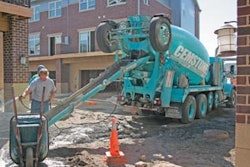Even the most diversified general contractor can't manage to perform every aspect of a major project. As such, subcontractors become a necessary component of the construction process.
Yet, hiring the wrong subcontractor can do substantially more harm than good. Poor workmanship, delays in arriving on site or completing jobs and/or safety violations can negatively affect the profitability of a project, as well as damage your reputation as a provider of quality construction services.
The traditional system of hiring subs based on the lowest bid calls to mind the old caveat: "You get what you pay for." Of course, this is not always the case — many subcontractors take a great deal of pride in their work. Even so, it's important to protect your business and ensure anyone who sets foot on your jobsites can get the job done without causing problems that may come back to haunt you.
One alternative is to utilize Best Value Contracting (BVC) in place of the low-bid system. In an article for Life Lines Online, a publication of the Laborers' Health & Safety Fund of North America (www.lhsfna.org), Scott Schneider describes BVC as a means to set a "performance floor" for bids based on past and anticipated results, as well as to check into the background of the bidders. Though typically used by project owners to pre-qualify construction managers or GCs, the BVC principles can also be used to weed out "unscrupulous" subcontractors and ensure jobs are awarded only to those who meet your established performance criteria.
As part of the BVC process, Schneider recommends requesting all potential bidders submit evidence of their safety performance record. One commonly requested item is the company's experience modification rating (EMR). A rating below 1.0 (or better yet, .8 or .7) is considered acceptable. Anything above 1.0 should send up a red flag and require further explanation from the potential sub.
You can also request a copy of the company's OSHA records. If the OSHA log shows a large number of injuries, particularly involving lost work days, further detailed questions are justified regarding the company's safety program.
An additional step you can take is to check for a history of OSHA inspections. This information is accessible via the OSHA web site at www.osha.gov (search by company name). Any serious or willful citations should be cause for concern.
Also consider requesting copies of the firm's general safety programs, as well as any specific safety programs for hazards (i.e., confined spaces or work at heights) the sub may encounter on your jobsite. You can also request documentation of safety training.
All of this information can be requested as part of the bid package. However, for smaller jobs, it may be easier to pre-qualify potential subs prior to the bid request. Ask for references from previous project owners or GCs the sub has worked with. Contact these references to determine their satisfaction with the sub's performance. Even if the response is positive, follow up on the sub's safety record to avoid any nasty surprises.
Once you have a list of "pre-approved" subs, submit bid requests only to firms on this list. This will save you the time and effort of weeding out less qualified subs after the bids come in.


















